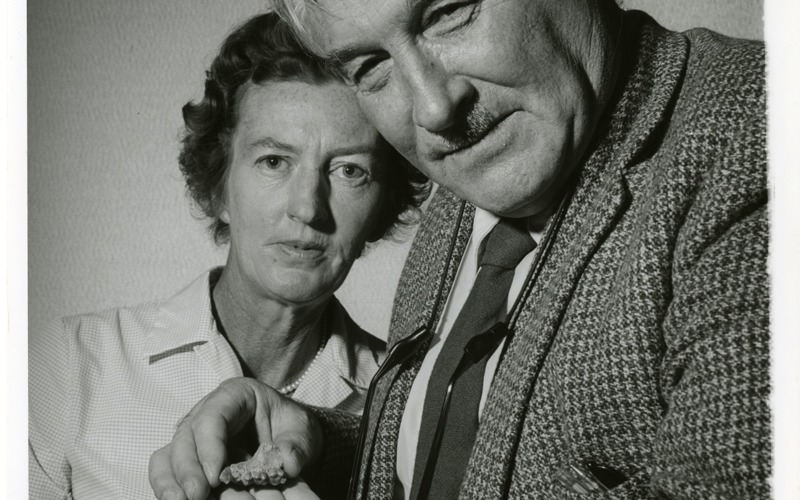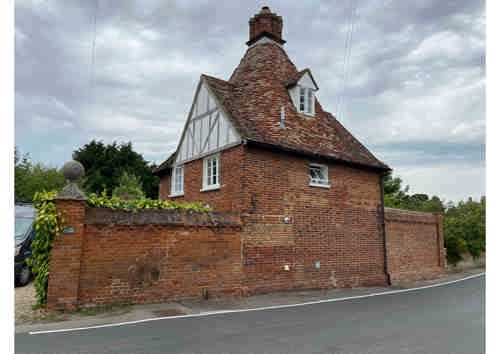A palaeoanthropologist is being honoured for his work tracing the evolution and origins of humans. A blue plaque will be installed at the former home of Louis Leakey at 13 High Street, Foxton, in South Cambridgeshire.

Dr Leakey established that the origins and evolution of mankind began in Africa, he advanced the study of primates and was instrumental in launching the careers of three pioneering female scientists.
His work advanced the study of primates and he was later portrayed in the 1988 film "Gorillas in the Mist", with Louis Leakey as a central character.
The Blue Plaque Committee said the installation aims to "preserve the stories that shaped our community" to recognise a man whose work helped our understanding of what it means to be human.
The Cambridge & District Blue Plaque Scheme is run by local charity, Cambridge Past, Present & Future.
Cllr Tom Bygott, a South Cambridgeshire District Councillor, helped bring the plaque to fruition. He said: “The plaques recognise people and events that have made a significant impact on our area, the UK, or indeed the world. We are very pleased that the 43rd plaque will be fitting tribute to a man whose insatiable curiosity, rigorous fieldwork, and tireless advocacy transformed our understanding of early human evolution.”
Louis Leakey was born in 1903 in what was then British East Africa (modern-day Kenya). His parents were English missionaries, and Louis grew up among the Kikuyu people, with whom he developed close ties that would profoundly shape his worldview. He became fluent in Kikuyu and was later made an honorary member of the Kikuyu tribe, a rare distinction for a European.
From a young age, he collected stone tools and fossilised bones, intuitively drawn to the clues they offered about early human life. Leakey’s formal education began in England and he gained a scholarship to St John's College, Cambridge where he studied archaeology and anthropology and then became a Research Fellow.
Cllr Corinne Garvie, a fellow district councillor on the Blue Plaque Committee, said: “Recognising buildings like the former home of Louis Leakey in Foxton helps preserve the stories that shaped our community. Leakey's groundbreaking work in tracing human evolution and our origins as a species by studying the fossil record began right here, and it's vital we celebrate and remember the local roots of such global figures. Blue Plaques help us connect with our past, inspire future generations, and honour the incredible people who once called our villages home.”
Louis Leakey had profound respect for the people of Africa and a firm belief that all human beings are equal and had evolved together as a single closely related group.
Most famously, he was instrumental in launching the careers of three pioneering female scientists Jane Goodall, Dian Fossey, and Birutė Galdikas. Goodall’s groundbreaking work with chimpanzees in Tanzania, Fossey’s studies of gorillas in Rwanda, and Galdikas’ research on orangutans in Borneo each reshaped the field of primatology. Leakey’s foresight and mentorship were crucial in making this possible, as was his ability to secure funding and institutional support for their fieldwork.
Dian Fossey's work was later portrayed in the 1988 film "Gorillas in the Mist", with Louis Leakey as a central character.
Leakey was a passionate advocate for science, conservation, and education. He wrote prolifically, not only for academic journals but also for a wider public audience, believing deeply in the importance of communicating science to society. His many books and lectures helped popularise the idea of human evolution and inspired generations of scientists and enthusiasts alike.
He was also a committed anti-racist and a vocal critic of Eurocentric views of history and culture.
Louis Leakey and his first wife Frida, née Avern, lived at The Lodge, 13 High Street, Foxton in the early 1930s. The house was built in 1705 and is of historic interest. It was during his time in Foxton that Leakey continued to write and reflect on the broader implications of his work. The peaceful setting offered respite from the often harsh conditions of fieldwork and provided a base for intellectual exchange with colleagues across the globe.

Dr Tamsin O’Connell, Head of Department, Department of Archaeology, University of Cambridge, said: “We are delighted to host the unveiling of this blue plaque that honours Louis Leakey and his monumental impact in establishing the foundations of our understanding of human evolution and the pivotal role of Africa. From his days as an ‘Arch & Anth’ undergraduate here at Cambridge to his world famous excavations at Olduvai Gorge, he was an energetic and innovative thinker, constantly encouraging new ideas and approaches, as well as inspiring succeeding generations across archaeology, palaeontology and primatology.”
View all news
